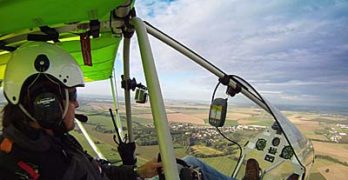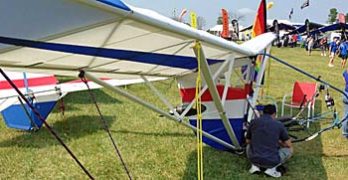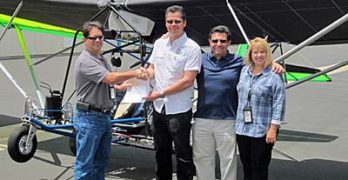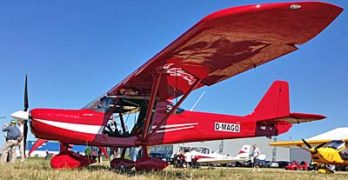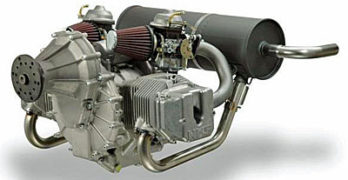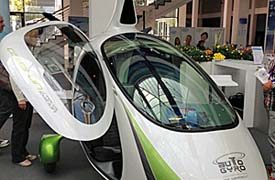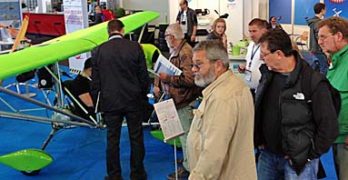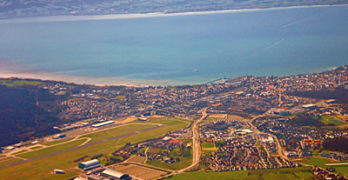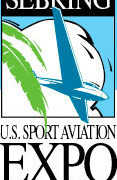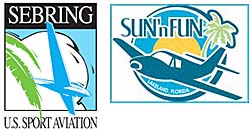Evidently, a magic number exists to authorities in various civil aviation agencies around the developed world. That magic number — more correctly a range — is 115 to 120 kilograms, or 253 to 264 pounds. FAA led this charge way back in 1982 with the introduction of FAR Part 103 codifying that an airplane, ‘er … “ultralight vehicle” with an empty weight of 254 pounds — subject to certain exceptions for emergency airframe parachutes or float equipment — could be flown without three requirements common to all other aircraft. Part 103 vehicles• do not require registration (N-numbers); the pilots of these ultralights need no pilot certificate of any kind; nor do they need a medical. Such aircraft can be sold fully built, ready to fly. The entire regulation governing their use can be printed on the front and back of a single page of paper. This simply must be one of the most remarkable deregulatory efforts in all of aviation.
Search Results for : Part 103
Not finding exactly what you expected? Try our advanced search option.
Select a manufacturer to go straight to all our content about that manufacturer.
Select an aircraft model to go straight to all our content about that model.
Affordable EMG … Electric Motor Glider
Update 8/8/14 — See our video interview about EMG at the end. An unpowered EMG — or Electric Motor Glider — from Adventure Aircraft has already taken 400 flights; it has also been fitted with a small electric motor … complete with carbon folding prop. A new Experimental Amateur Built (EAB) two seater is now taking shape and both variations were on exhibit at AirVenture 2014 in the newly named Fun Fly Zone (formerly Ultralight Area). EMG’s spark is provided by the dynamic duo of Brian and Carol Carpenter of Rainbow Aviation, well known for their LSA maintenance courses including the LSR-M (Light-Sport Repairman Maintenance) credential that has prepared many mechanics to do serious work on the growing fleet of LSA. EMG builder Adventure Aircraft is a subsidiary of Rainbow. Evidently this hard working pair aren’t fond of wasting many hours with something so mundane as sleep because the project is unfolding quite swiftly.
Quicksilver Ready to Build Special LSA
Plenty of longtime light aircraft enthusiasts have wondered when Quicksilver would enter the SLSA sweepstakes. “On June 26th we received the airworthiness certificate and the operations limitations document for our Sport 2SE Special LSA after a three-hour inspection from the FAA,” said Quicksilver Aeronautics President and CEO, Will Escutia. Earlier the company reported successfully passing an intensive FAA audit, but a final aircraft inspection by FAA personnel was still needed. Aviation Safety Inspectors, John Soltis and Kym Robbins, provided the pink airworthiness card at the French Valley Airport (photo), approximately 10 miles from the company’s factory. Soltis expressed his congratulations saying the airplane “looked very good.” At near the industry’s lowest cost — $39,999 for a fully built Sport 2SE — those Light-Sport fans who fret about the high cost of some (exceptionally well equipped) airplanes now have a very affordable choice. If $40 Grand is still too much you can buy a Quicksilver ELSA or Experimental Amateur Built for even less.
Flying Serbia’s Light-Sport Aircraft Entry
Update April 13, 2018 — At Sun ‘n Fun 2018, I was shown documents and photos to suggest the problem was the opposite of what appears in the following paragraph. Without legal discovery, for which I am not qualified, it is challenging to sort out the truth, however, based on the four years of history that has followed this story, I’m inclined to believe Aeroeast is a legitimate producer. In any event, as the aircraft has since changed in many ways, I consider the matter closed and wish Aeroeast good success in the future. —DJ
Update August 10, 2014 — At AirVenture 2014, I was informed that Aero-East-Europe’s Sila 450 is significantly based on a Max Tedesco design. When I heard this comment, I recall I had looked at the Serbian aircraft featured in the following article and thought it looked vaguely familiar. Many aircraft designs share a resemblance so I didn’t think much of it and I was no where near any of Tedesco’s airplanes to have a comparison.
HKS Four-Stroke Engine is Back on the Market
A majority of pilots express a preference for four-stroke engines due to their lower noise signature, reduced fuel consumption, ease of fueling and other reasons. For larger aircraft, engines from Rotax, Continental, and Jabiru may be preferred choices but for lighter aircraft most of these engines are more than needed (though the 80-hp Rotax 912 UL and 81-hp Jabiru 2200 can work for some intermediate-sized light aircraft). All the preceding engines are more costly as well. One popular, economical choice was the HKS from Japan but that well-regarded engine appeared destined to disappear from the American market, a shame as it is one of only a few engines to have successfully complied with the ASTM standards needed for use on LSA. No such FAA acceptance is needed for Part 103 ultralight vehicles or Experimental Amateur-Built aircraft. Fortunately, to paraphrase Mark Twain, “Reports of [the HKS] death were greatly exaggerated.”
Earlier in 2014, HKS discontinued production of HKS-700E and HKS-700T.
Aero 2014 Review … Starting to Think AirVenture
Life has settled down a little after the rush that began at the end of March. Five weeks back, Sun ‘n Fun was approaching to kick off the season of recreational flying.
Aero in Germany followed with only a one day break before boarding the airliner to Europe followed by plenty of follow-up and contemplating the hot and fast action. With a couple weeks of perspective and to answer a common question — How does the industry look in Europe? — I have some final observations.
I found five areas to consider and list them below. Among all the many wonderful aircraft I saw, two particular subgroups stood out for me personally, one for its sheer success and the other for its subtle return to a higher interest plateau.
I refer first to gyroplanes and secondly to, well … what to call them? How about simply “ultralights?” Even that word isn’t right because Ultralight in Europe means something quite different from ultralight (vehicle) in the USA.
Surprise Star of the Show at Aero?
It depended on whom you asked. As in the United States some were skeptical at Aero. “Oh, this will go nowhere.” “No one is interested” “We tried this and it didn’t work.” Maybe these naysayers are right, but the activity at one booth (or “stand” as they prefer in Europe) seemed to powerfully counteract that doubt. The stand was the Hirth exhibit which featured a variety of aircraft using the German powerplant. The one and only American aircraft example in the Hirth exhibit — indeed, perhaps the only light aircraft at Aero that was Made in the USA — was the Aerolite 103, or as it has been renamed here, Aerolite 120. Why the different name and why the strong interest? To clarify, by strong I mean an airplane sometimes so surrounded by attendees that you could not even get close. As further proof, Aerolite 120 was written up by several publications during the four days of Aero and also garnered television coverage.
First Impressions at the 2014 Aero Friedrichshafen
From the outdoor event at Sun ‘n Fun we jetted across the Atlantic to go indoors for Europe’s amazing air “fair” (as they prefer in Europe versus “airshow”). Aero always manages to please and this year was no exception. My only objection was the very tight timing with Sun ‘n Fun, which left us packing up furiously on Sunday, gathering new clothes on Monday, and racing to the airport for a flight to Munich, Germany followed by some hours of driving after a night with no sleep. My wife Randee and I arrived at Aero 2014 by noon on opening day. Whew!
Both shows are must-go events in my coverage of Light-Sport, light kits, and ultralights. Next year will be even harder with Aero immediately preceding Sun ‘n Fun. Still, that’s a year away and I am pleased to be in Friedrichshafen, Germany for this excellent event.
Last News Rush Before Sebring 2014 …
People are starting to arrive in Florida. Today, we had a pleasant lunch conversation with Dynon’s president Robert Hamilton. He observed that Dynon enjoyed their best year ever in 2013 and they continue bringing new avionics innovations at modest prices. Fellow Dynon staffer Kirk Kleinholz was in the state even earlier traveling around offering tech support. Great work, Dynon-ers! As we all enter the last-minute rush to head to the tenth Sebring, a few news items arrived and I’ll run through them so you have some idea of what will be present at the LSA event.
Progressive Aerodyne announced they received FAA acceptance for the Elite version of their Searey Amphibious LSA. Searey Elite is mightily powered with a Rotax 914 turbocharged engine; you can see a short video of it launching in this article. “This stylish aircraft offers many advanced features such as a large sliding canopy that can remain open while flying.
Sebring No-Show Bargains Will Attend Sun ‘n Fun
Not long ago, I posted about Kitfox tending to business and expressing regret that they chose to stay home in Idaho versus making the trip to the Sebring LSA Expo 2014. Team Kitfox was not the only one, however. In addition, AeroSport didn’t bring their BushCat, nor did Aerotrek bring their A220 or A240, nor did Quicksilver show with their SLSA candidate, Sport 2S, or their joint venture Electric Motor Glider (a very cool project from the west coast about which I will do a further update in the future). The reasons for these no-shows were varied but the good news is that they’ll be at Sun ‘n Fun. Oh, and one more thing about all four aircraft mentioned below: each of them offers a purchase value that defies the current mindset about the cost of modern LSA.
BushCat by SkyReach is one of those SLSA that easily answers the lament, “These LSA have become too expensive.” Too many pilots say this without considering their other choices.
- « Previous Page
- 1
- …
- 25
- 26
- 27
- 28
- 29
- …
- 53
- Next Page »


